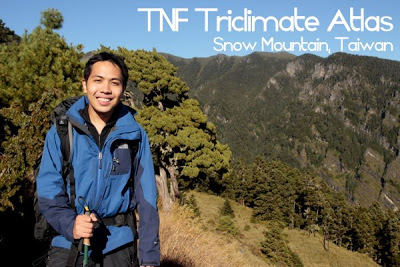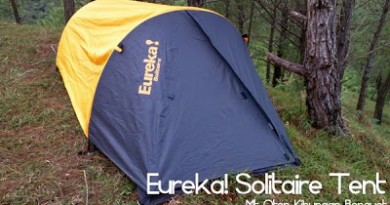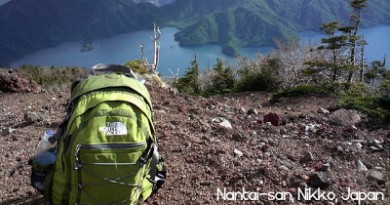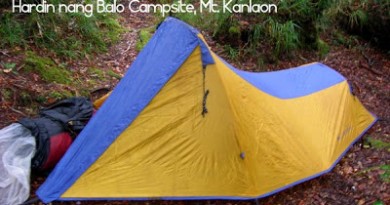Gear Review: The North Face Triclimate Atlas jacket

With my progressive pursuit of mountains abroad, I needed a total upgrade of my ‘hiking arsenal’. For instance, I have acquired two pairs of hiking boots, several base layers, and a lot of Merino wool. These items, however, have little or no practical application in most of the hikes here in the Philippines!
So it is the crossover items, which I can use both in tropical and temperate conditions, that I have come to love the most. The North Face Triclimate Atlas jacket is one such crossover item, which I have already used successfully in Snow Mountain, Taiwan, and then just a week later, in Mt. Pulag.
This is a two-layer jacket, and you can separate them; the outer layer uses the TNF’s Hyvent technology (waterproof, breathable) and is a good windbreaker and rain protector. The only drawback is that yes, it is waterproof, but it can only do so much, especially for the torrential rains that we experience here in the Philippines. To its credit, it also dries fast, even without exposure sunlight. In Snow Mountain, it rained heavily on Day 1, but I was able to use it again on Day 2, and again on Day 3. It is also breathable, but again, it can only do much. Yet even with these limitations, it is still a nice jacket that can cover most situations, rain-wise.
The inner layer is made of Triclimate 200 series fleece, which is the insulation layer of the jacket. Of course, following the principles of layering, the base layer comes first (and I recommend wool for this), then comes the fleece (or down) as mid layer, and finally, the outer layer, which has to be waterproof and breathable, and for which many are insisting that Gore-Tex is a must (such is the null hypothesis, and my trying out other technologies is a form of research). The Triclimate Atlas aims to cover for both the mid and outer layer.
Up to how cold can the jacket hold? I cannot give an answer that will hold true for anyone but myself, tolerance to cold being highly subjective. But I think for the purposes of semi-temperate trips like Kinabalu and Snow Mountain, this is already perfect. For fleece, of course, the key is to bring several thin ones that you can layer, depending on. But I guess its inner layer makes for a good “main mid-layer”, if there’s such a thing.
Overall, it’s a good jacket and a nice addition to my current use jackets; but it is not the ultimate outer shell (the TNF Venture might do more justice to my expectations). I am still waiting for something to dethrone my Aigle Actimum Gore-Tex XCR Jacket from the outerwear I would love to have on me when I’m having the time of my life. The Mountain Hardwear Typhoon Jacket (Gore-Tex Pac-Lite), although it is only the outerwear, is a temptation and I’m about to succumb to it! Considering that TNF and Columbia have both moved away from Gore-Tex, this is probably the ‘most waterproof’ jacket in the Philippines, but I will have to give it a try. Meanwhile, it is always nice to get these TNFs!





Leave a Reply
Be the First to Comment!